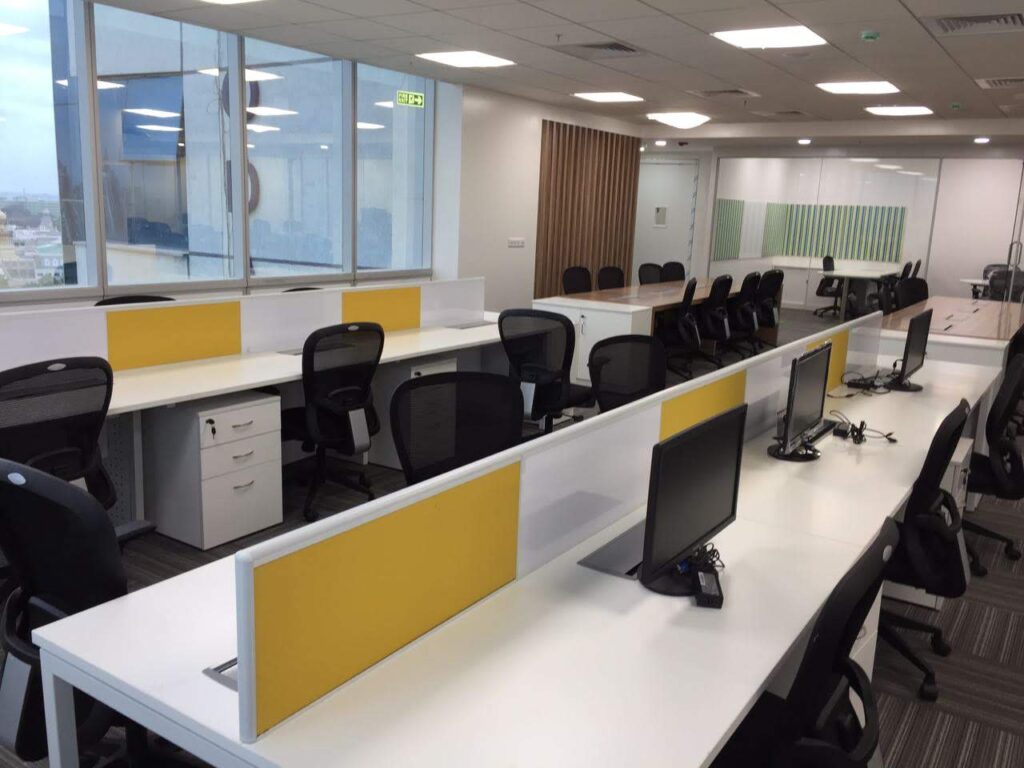
In today’s fast-paced world, creating a productive workspace is more than just having a desk and chair. A well-designed office interior can significantly enhance productivity, creativity, and overall employee satisfaction. If you’re looking to elevate your office interior design to foster a more productive environment, this guide will walk you through key principles and practical tips to make your office space work better for you and your team.
1. Understand the Importance of Office Interior Design
Office interior design is not just about aesthetics; it’s about creating a space that supports the needs of your business and employees. A well-thought-out office interior design considers factors such as ergonomics, lighting, acoustics, and the psychological impact of colors and layouts. A productive workspace balances functionality and style to promote comfort, efficiency, and a positive work atmosphere.
2. Prioritize Ergonomics for Employee Comfort
Ergonomics plays a crucial role in office interior design. An ergonomic workspace reduces the risk of strain and injury, making employees feel comfortable and supported throughout their workday. Invest in adjustable chairs, desks, and monitor stands to ensure that all workstations accommodate different body types and postures. Providing ergonomic furniture and accessories can lead to fewer sick days, improved focus, and enhanced productivity.
3. Optimize Your Layout for Collaboration and Focus
A productive office layout balances open spaces for collaboration with quiet areas for focused work. Consider creating zones for different types of work: collaborative areas for brainstorming sessions, quiet zones for deep focus, and communal areas for informal meetings and breaks. The layout should allow for easy movement and interaction among team members, fostering a sense of community and collaboration while also providing private spaces when needed.
4. Harness the Power of Natural Light
Natural light is one of the most important elements in office interior design. Exposure to natural light can boost mood, energy levels, and overall well-being, leading to increased productivity. Arrange desks and workstations near windows to maximize natural light exposure. Additionally, consider using glass partitions to allow light to flow freely throughout the office space. For areas without direct access to natural light, use high-quality LED lighting that mimics daylight.
5. Incorporate Biophilic Design Elements
Biophilic design, which incorporates natural elements into the workspace, is a growing trend in office interior design. Adding plants, natural materials like wood and stone, and even water features can create a calming and refreshing environment. Studies have shown that biophilic design elements can reduce stress, increase creativity, and enhance overall productivity. Consider placing potted plants on desks, installing a green wall, or using nature-inspired colors and textures in your office decor.
6. Choose a Color Palette that Boosts Productivity
Colors have a significant impact on mood and productivity. In office interior design, choosing the right color palette can create a stimulating or calming effect. Blue and green hues are often associated with calmness and concentration, making them ideal for focused work areas. Yellow is energizing and can inspire creativity, while neutral tones provide a clean, professional backdrop. Consider using a mix of colors that align with the function of each area within your office.
7. Manage Noise Levels for Better Concentration
Noise can be a major distraction in an office environment, negatively impacting productivity. Effective office interior design includes strategies for managing noise levels. Use acoustic panels, carpets, and ceiling tiles to absorb sound. Designate quiet zones for focused work and consider using white noise machines or background music to mask distracting sounds. By creating a balanced acoustic environment, you can enhance concentration and minimize distractions.
8. Incorporate Flexible Workstations and Breakout Areas
Flexibility is key in modern office interior design. Incorporate a variety of workstations that cater to different tasks and working styles. Standing desks, lounge areas, and modular furniture allow employees to choose the best setup for their needs at any given time. Additionally, breakout areas provide spaces for relaxation and informal meetings, helping employees recharge and stay productive throughout the day.
9. Technology Integration for a Seamless Workflow
Integrating technology into your office interior design is essential for a productive workspace. Ensure that all workstations are equipped with the necessary technological tools and that the office layout supports a seamless workflow. Wireless charging stations, smartboards, and high-speed internet are just a few examples of how technology can enhance productivity. Keep cables and wires neatly organized to maintain a clean and clutter-free environment.
10. Personalize the Workspace to Reflect Your Brand and Culture
Finally, your office interior design should reflect your company’s brand and culture. A personalized workspace that aligns with your brand identity can foster a sense of belonging and pride among employees. Use company colors, logos, and artwork to create a cohesive look that represents your brand values. Encouraging employees to personalize their workstations with family photos, plants, or other personal items can also enhance job satisfaction and productivity.
Conclusion
Creating a productive workspace with thoughtful office interior design is an investment in your company’s success. By prioritizing ergonomics, optimizing layouts, harnessing natural light, incorporating biophilic elements, and integrating technology, you can create an environment that fosters creativity, collaboration, and overall productivity. Remember, a well-designed office is not just a place to work but a space that inspires and motivates your team to achieve their best.
